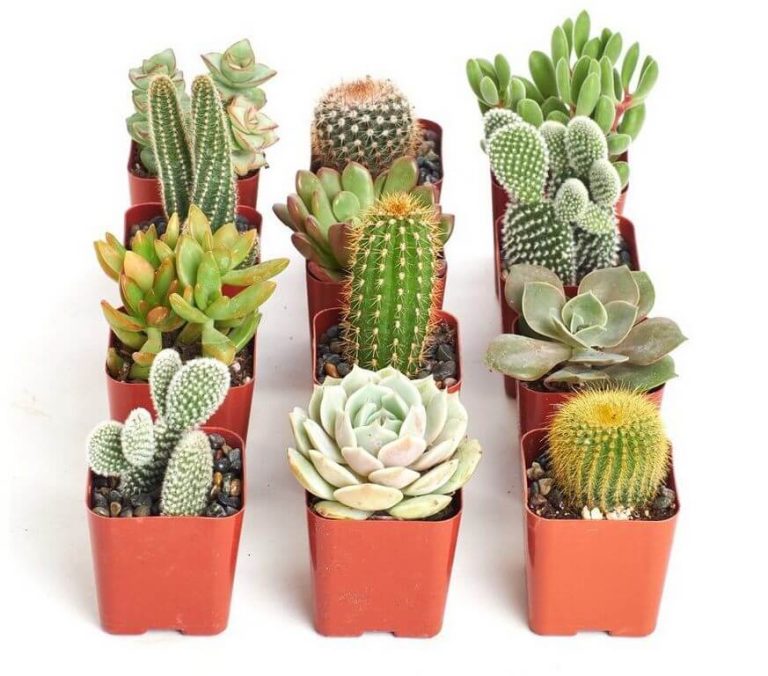Ultimate guide of Small Cactus Plants (Mini cactus)
At first glance, Small cactus plants might seem like they require little care. But this isn’t the case. Small cactus can be rewarding and beautiful indoor plants if you learn how they grow and thrive in your home or office. If you’re not sure where, to begin with caring for your small cactus plants during winter, follow these tips:
Small Cactus Types
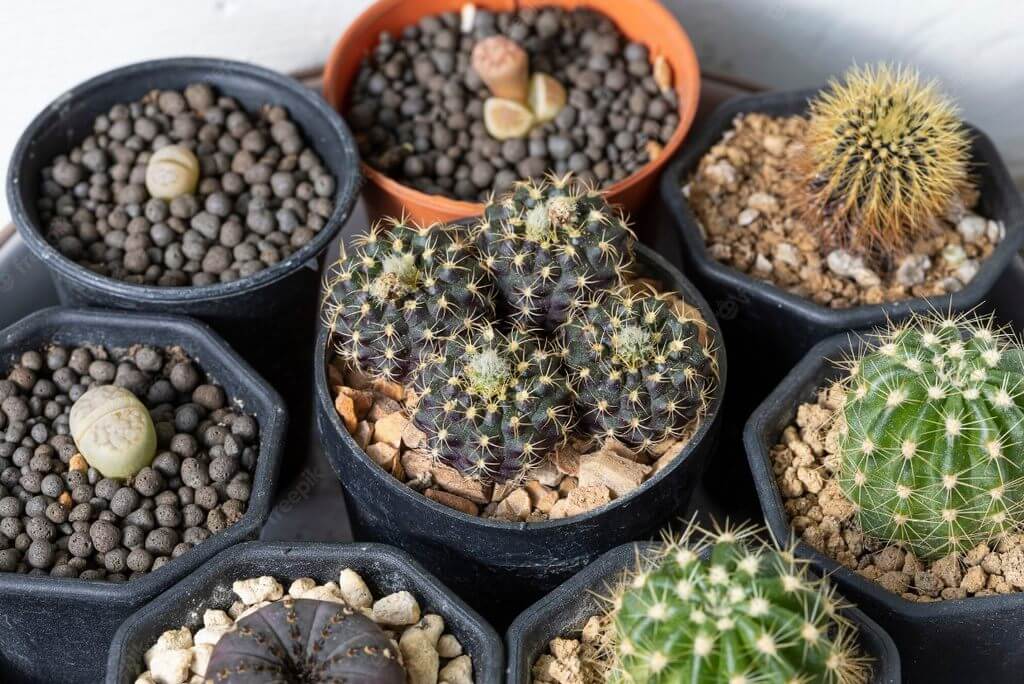
Those looking for a little cactus can select from a wide variety of options. Mini cactus, being both small and low-maintenance, can function admirably as indoor houseplants.
You can pick from a variety of mini cactus that range in size, color, and texture. Depending on what kind of little cactus plant you’re looking for, you can obtain one with long spines, short spines, or no spines at all. Compared to other types of cactus the mini cactus is more cute and can be addition to your indoor plant.
Mini cactus come in a wide variety of species. Examples of the most popular ones sold in hardware and gardening supply stores are:
Types of mini cactus
| Ariocarpus fissuratus (Living Rock Cactus) |
|---|
| Cephalocereus senilis (Old Man Cactus) |
| Stenocactus multicostatus (Brain Cactus) |
| Mammilloydia candida (Snowball Cactus) |
| Echinocereus arizonicus (Arizona Hedgehog Cactus) |
| Escobaria vivipara (Ball Cactus) |
| Mammillaria elongata (Gold Lace Cactus) |
| Mammillaria hahniana (Old Lady Cactus) |
| Moon Cactus |
| Bunny Ear cactus |
| Rat Tail |
| Old Lady Cactus |
| Christmas Cactus |
| Star Cactus |
Small Cactus Types: A Rat Tail Cactus (Cleistocactus winteri)

| Category | Information |
|---|---|
| Common Name | Golden rat tail |
| Conservation status | Endangered (IUCN 3.1) |
| Scientific classification |
|
| Binomial name | Cleistocactus winteri D.Hunt |
| Synonyms |
|
Native to Central America and southwestern Mexico, the rat tail cactus is a fascinating plant. Its distinctive long, trailing steps are reminiscent of a rat’s tail and have earned it its moniker. The tallest these stalks get is four feet. When kept inside, rat rail cacti do best when suspended from the ceiling in hanging baskets or pots. This gives the trailing stems room to develop in accordance with their genetic blueprint.
Some species of rat rain cactus produce violet-red flowers in the spring and early summer, while others don’t bloom at all. However, orange and pink flowers may bloom on some varieties. The tubular flowers are quite enormous, however they only bloom for a short time. Stem cuttings of a thriving rat rail cactus plant will produce new plants in no time. However, care must be used when handling its stems because they develop spines that can easily pierce the flesh.
Small Cactus Types: Moon Cactus
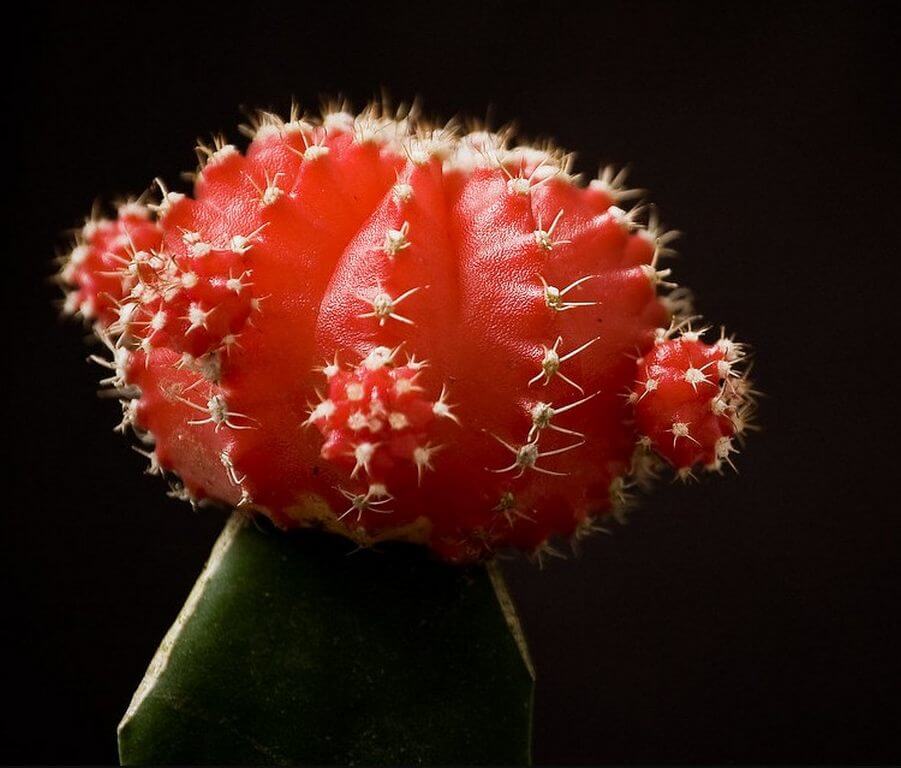
| Category | Information |
|---|---|
| Conservation status | Least Concern (IUCN 3.1) |
| Scientific classification |
|
| Binomial name | Gymnocalycium mihanovichii (Fric ex Gürke) Britton & Rose |
| Synonyms |
|
The Moon Cactus, with its distinctive form and spectrum of colors from yellow to pink, red, and orange, is among the most easily known houseplants. Its round form and fluorescent hues make it instantly recognizable. These cactus would typically be perched atop a different, greener variety.
Because the moon cactus cannot survive on its own, it is the result of human ingenuity. Because of its inability to produce food without chlorophyll, it must be grafted onto a cactus with green leaves. That means you’ll only have to water one plant instead of two. The brilliantly colored portion of the moon cactus must be grafted onto another plant since it lacks the ability to create chlorophyll on its own.
The minimal level of care required makes the moon cactus a good choice for a first houseplant. You can use them to spruce up your living room, porch, or window seal. Moon cacti do better in indirect light rather than full sun. Moon cactus, like other desert-adapted cacti, does not require a lot of water. If the cactus gets too much water, it could die from root rot.
Growing moon cacti indoors allows you to take advantage of their many colorful varieties to enhance the aesthetic value of your home. You can choose to stick with one color scheme or experiment with a few different ones. In addition, moon cacti are slow-growers with a potential height of just six inches. Keep in mind that the condition of your moon cactus is critically dependent on the quality of the stock you use. That’s why picking a suitable stock cactus that complements your moon cactus is crucial.
Small Cactus Types: Old Lady Cactus
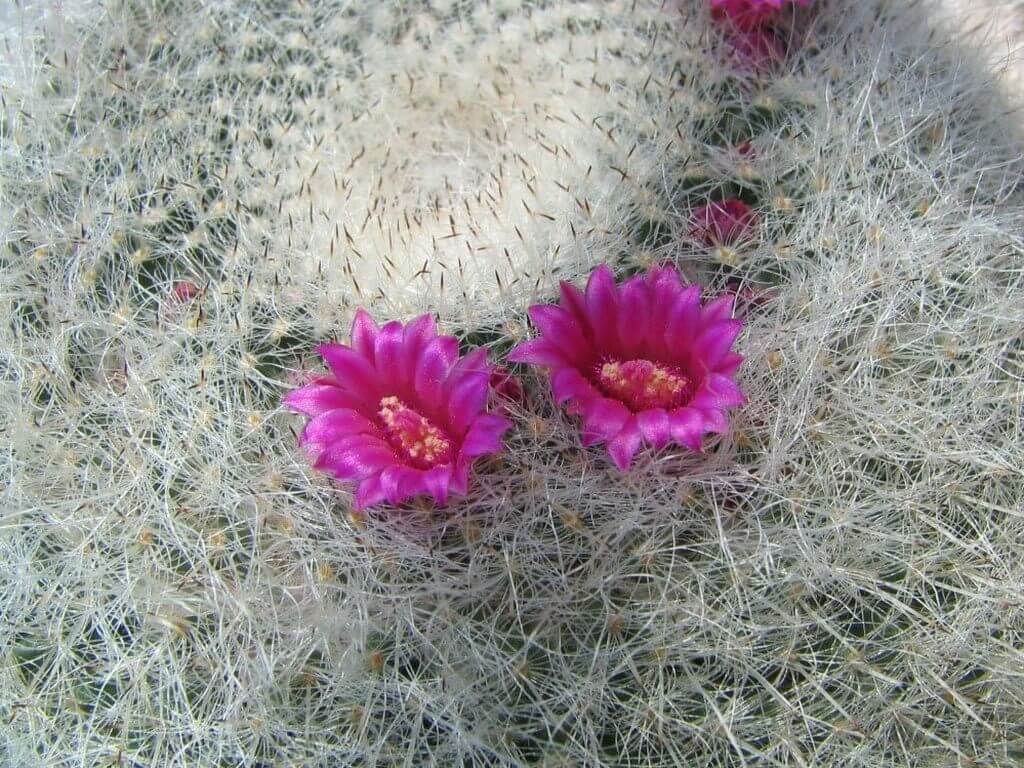
| Category | Information |
|---|---|
| Common Name | Old Lady Cactus |
| Conservation status | Near Threatened (IUCN 3.1) |
| Scientific classification |
|
| Binomial name | Mammillaria hahniana Werd. |
Mammallaria Hahniana, more commonly known as the Old Lady cactus, is a popular species of sun-loving powder puff cactus that may be grown in a house. Its solitary, spherical stems are easily recognizable, growing to a maximum of 4 inches in height and 8 inches in width. If the cactus is being cultivated inside, a bright window is ideal for its growth. If this can’t be done, at least make sure they get plenty of fresh air and sunshine throughout the warmer months.
If you must bring your Old Lady Cactus inside, the ideal place to put it is near a window, where it will get bright, indirect light for the majority of the day. However, if you are unable to locate an area with sufficient light, you may want to explore utilizing grow lights to complement your cactus’ lighting needs.
The white, thin, and flexible hairs that can reach lengths of up to 5 cm on an Old lady cactus are responsible for the plant’s common name. These hairs become denser and curlier as the plant matures, effectively hiding it from view.
Small Cactus Types: Star Cactus
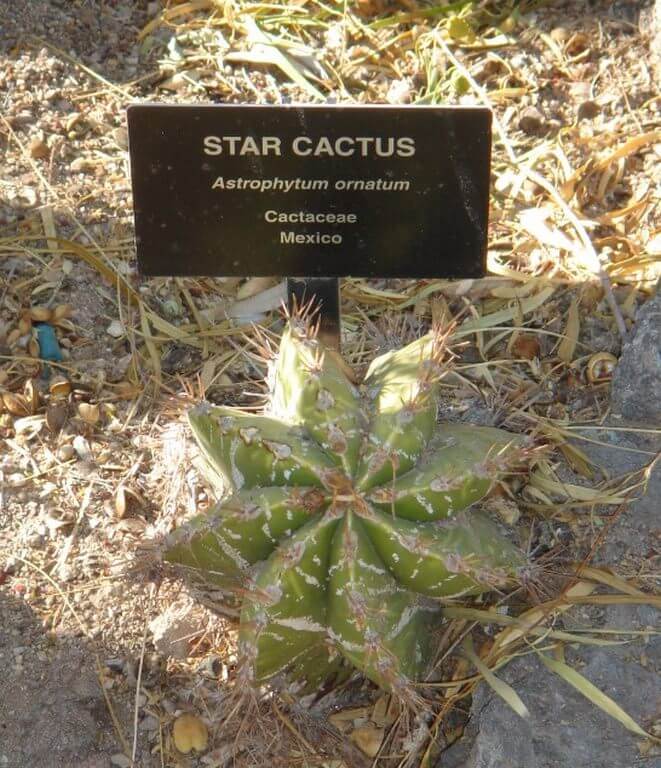
| Category | Information |
|---|---|
| Common Name | Bishop’s Cap or Monk’s Hood Cactus |
| Conservation status | Vulnerable (IUCN 3.1) |
| Scientific classification |
|
| Binomial name | Astrophytum ornatum (DC.) Britton & Rose |
One of the few spineless cacti, the Star Cactus (Astrophytum asteria) is easily recognizable by its pudgy, sand-dollar-like form. The fact that it can be nurtured with little effort makes it an excellent option for a houseplant. Its spherical body may reach a maximum of 6 inches in diameter. It is coated in small white dots and has slightly ridged sides.
Flowers can be seen on an Astrophytum cactus between March and May. It has beautiful yellow flowers with orange centers. These would eventually die out in the late spring, making space for fruits like berries and drupes. This cactus does well when brought indoors and requires little care beyond regular watering and placement in bright light. As its name implies, the star cactus can hold a lot of water in its unique structure. During drought, these are a necessary item. However, care must be taken to prevent root rot by not over-watering.
Humans and animals alike are not poisoned by the cactus, making it an excellent houseplant. Take care when handling it, as it is fairly spiky.
You should not take any chances with the peace and quiet of your home. Cactus lovers will understandably want to choose from among the many little cacti that thrive in enclosed spaces. The list is practically unlimited, but there are some staples that are universally adaptable and easily accessible. The best aspect about these smaller varieties of cacti is that they don’t require much care beyond regular watering and fertilizing.
Christmas Cactus
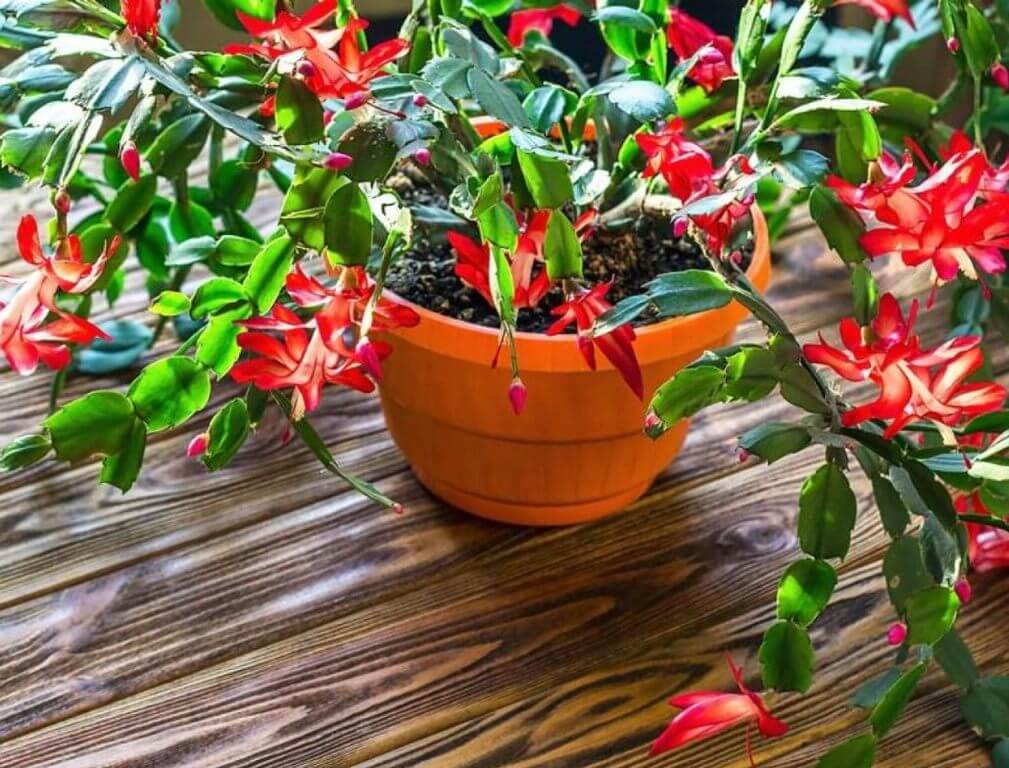
| Category | Information |
|---|---|
| Conservation status | Not mentioned in the provided content. |
| Scientific classification | Kingdom: Plantae Clade: Tracheophytes Genus: Schlumbergera |
| Binomial name | Not specified for a particular species in the provided content. |
| Synonyms | Epiphyllanthus A.Berger, Opuntiopsis Knebel, Zygocactus K.Schum., Zygocereus Frič & Kreuz., and others. |
As its name suggests, the Christmas cactus (Schlumbergera bridgessii) is a unique plant that flowers in time for Christmas, Easter, or Thanksgiving. Because it’s easy to grow and maintain, it’s frequently given as a Christmas present.
You may easily grow new cacti from cuttings in the comfort of your own home. Nonetheless, Christmas cactus needs to be protected from direct sunshine so that its leaves don’t become scorched. The Christmas cactus is well-known for its vibrant flowers, but it can be damaged by sudden shifts in temperature or a lack of water.
You may increase the length of its flowering season by keeping the soil moist and the temperature at around 65 degrees. Applying for high potassium fertilizer once every two weeks and reporting annually after each flowering period is also recommended.
Small Cactus Types: Bunny Ears
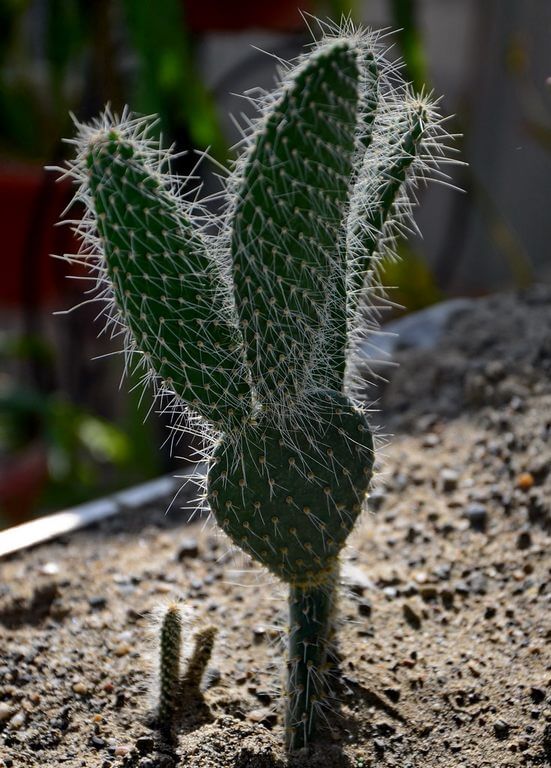
| Category | Information |
|---|---|
| Common Name | Angel’s-wings, Bunny ears cactus, Bunny cactus, Polka-dot cactus |
| Conservation status | Least Concern (IUCN 3.1) |
| Scientific classification |
|
| Binomial name | Opuntia microdasys (Lehm.) Pfeiff. |
In spite of its desert origins, the tiny bunny ear cactus thrives in the relative humidity and warmth of an interior setting. It originated in Mexico but is now widespread in dry and semiarid regions worldwide. Its unusual appearance, with pads that resemble rabbit ears, has made it one of the most popular houseplants. It’s easy to replicate the bunny ears’ natural environment in a home greenhouse, so long as you provide it with enough of bright light and a humid environment similar to its native range. The bunny ears plant thrives in dry, sunny, low-humidity environments, making it an ideal houseplant.
Watering of Small Cactus
Watering instructions depend on the type of cactus. For example, a common succulent like aloe vera will need more water than an epiphytic species like the prickly pear cactus.
- Cactus should be watered when the soil is dry to the touch. This means that you can feel it with your fingers—if there’s still some moisture in your soil, wait until it feels dry before watering again.
- Too much or too little water can damage healthy plants, so make sure you follow these standards: -Check how much water your plant needs by checking its surface; if there is no visible moisture on its leaves, then they need more water than otherwise (and vice versa). If there are no signs of life, don’t worry about watering them!
Sunlight
Sunlight is essential for cacti plants. If a plant does not receive enough sunlight, it will become unhealthy and die. Cacti should be placed where they receive at least 4 hours of direct sunlight daily. The ideal location for your mini cactus will depend on what kind of Small Cactus you have. Suppose your plant is a succulent such as an aloe vera or another succulent. In that case, it may prefer being near a window that receives direct sunlight for extended periods (such as summer). However, if your plant is an epiphytic bromeliad or other types of evergreen tree-like plant like the bird’s beak tree, which needs shade throughout much of its year (and thus cannot grow well in full sun), then placing them near an east-facing window would be ideal. Because this way, they’ll get plenty more light than if placed directly under our roof!
Potting
- Use a pot 2-3 times larger than the root ball.
- Make sure the pot has drainage holes.
- Use light and porous mix for your Small cactus plant’s soil, such as coco coir or peat moss. Mix some organic matter into the potting mix (e.g., shredded bark).
- Water thoroughly after potting, then place on top of an upside-down saucer to let excess moisture drain out slowly until no more water comes through; then replace with fresh soil from above so that air can circulate freely around them again!
Temperature
The ideal temperature for most cacti is between 60 and 70 degrees Fahrenheit. If you live in a cooler climate, you may need to increase your home’s temperature by several degrees. This can be done by adding a heater or turning off an air conditioning unit during winter. If your home is colder than average, place some insulation around windows and doors to ensure that heat does not escape through cracks in walls or floors.
If you live in a warmer area, keeping these small plants away from direct sunlight is best. Because they get too hot when exposed to sunlight and burn quickly if left out for long periods without protection from direct sunlight during the summer months (April through September).
Small Cactus plants should also be kept away from heaters and fireplaces as both emit harmful fumes into surrounding areas, damaging their delicate roots.
Humidity
Humidity is also vital for Small cactus plants. The ideal humidity level should not be too high or too low but between 50 and 70%. To increase the humidity of your plant, you can put it in a terrarium.
Fertilizer
Fertilize small cactus plants every two weeks. A good fertilizer for this is a slow-release one, such as Miracle-Gro Organic All Purpose Potting Mix or Earth Aid Plant Food (with high phosphorus content). This will help the plant grow and maintain its health.
It’s also essential to use a balanced fertilizer with the right amounts of each nutrient: nitrogen (N), phosphorous (P), potassium (K), calcium (Ca), and magnesium (Mg). If you don’t have any on hand, ask your local nursery or garden center if they sell specific products made explicitly for cacti!
Small cactus plants are more accessible to take care of than others, but they still have needs you must fulfill.
Small cactus plants are more accessible to take care of than others, but they still have needs you must fulfill. They’re also more rewarding than their larger counterparts.
Small cacti tend to be easier to take care of than large ones because they don’t need as much water and nutrients to survive properly. They also don’t need as much sunlight or heat for the plant’s growth cycle (germination) and development process (flowering) to happen steadily without interruption from outside sources. Wind or rainstorms cause damage to your precious baby’s root system resulting in him getting dehydrated quickly after being overexposed to moisture during these times. When there isn’t enough moisture around where he lives yet not enough growing season left before winter sets in again next year so now knowing what I just said about needing less maintenance so far away from where I live now would mean instead going outside every day looking after our yard work duties could probably save us some money down below ground level.
Get the correct Small cactus.
If you’re new to cacti, choosing the right plant for your space is essential. Cacti are generally low maintenance and suitable for beginners because they require little more than water and light. Cacti are perfect if you don’t have much time to spend on plants because they don’t need much care other than watering them once a week (depending on the type of Small cactus).
Provide a warm, sunny window.
Provide a warm, sunny window. A south-facing window is ideal for keeping your Small cactus plants warm and growing. However, artificial light may be an alternative if you have limited space in your home or apartment and cannot provide this kind of light source.
- West-facing windows: If you live in an area with lots of sun exposure (and don’t mind having a few dead spots), these windows provide the most needed light throughout the day. They also allow for more direct sunlight during morning hours when most plants need it most!
- East/north-facing windows: Avoid using east or north-facing rooms because they tend to receive less sunlight than other locations during winter. When temperatures drop below freezing, outside and inside conditions remain relatively cool due to insulation properties within homes/apartments built primarily without consideration given towards climate concerns, as well as varying degrees of southern exposure depending upon where one lives near mountainside ranges, etcetera).
Don’t overwater your small cactus.
- Don’t overwater your small cactus. The soil should be moist, not wet. If the soil is getting dry and crusty on top, it’s time to water again. But if the roots are still alive and growing firm, you’re probably good to go.
- Water when the soil feels dry! If your plant looks wilted or droopy (without any signs of growth), then it’s time for a drink! The best way to tell if your Small cactus needs water is by feeling its root system—if they feel soft and mushy beneath your fingertips (and there aren’t any cracks), then yes; otherwise, no needs been made yet today.”
Small cacti can be even more rewarding than their larger counterparts.
Cacti are an excellent choice for beginners because they’re easier to care for. They don’t have the exact needs as their larger counterparts, so that you can focus on other aspects of your plant’s health and growth. For example, a small cactus can be moved around easily without stressing its roots or crown (the topmost part of the plant).
Smaller plants also make it easier to find space in your house or apartment—you’ll be surprised at how much functionality comes with being able to put something so small in one spot! And lastly: cacti are typically less expensive than larger plants because they’re not as hardy or expensive to grow.
Pruning Small Cactus Plants
Pruning is the practice of removing dead or damaged parts from a plant. This can be done to encourage branching, control plant size, and keep it healthy. If you’re trying to cut down on watering your cactus plant in winter, pruning is essential to keeping them healthy throughout winter.
There are several different ways you can prune your small cactus plants:
- Cut back individual branches off at ground level with sheers or other sharp tools (this will also help prevent disease). Be careful when doing so because it can be easy for damaged roots to break away from their mother tree and cause damage to other areas within the pot!
Small Cactus Problem: Mealybugs
Mealybugs are slow-moving, sap-sucking insects that feed on a variety of plants. They are usually white or gray and look like cotton balls.
Mealybugs tend to move around the plant and can be found on many cacti’s leaves, stems, and flowers. Mealybug infestations usually occur when an environment is conducive to survival, such as high humidity levels combined with low temperatures (below 50°F).
Small Cactus Problem: Pests
- Mealybugs: This is a type of soft-bodied insect that feeds on sap. They tend to be small in size, and they can infest cactus plants without causing any harm to them. If you notice mealybugs on your cactus plant, try removing them with a sharp pair of scissors or using a cotton swab dipped in rubbing alcohol (this will sting!).
- Scales: Cacti are susceptible to scale insects because they leave behind a hard outer shell that protects the insect from predators and parasites. Scale insects usually appear as small bumps on the plant’s leaves; however, some species can also cause damage by sucking up nutrients from beneath the surface layer of tissue below its skin (this may cause discoloration). The best way to get rid of these pests is by spraying your plant with soapy water after watering it regularly for several days until all signs have disappeared completely.
Small Cactus Problem: Scales
Scales are tiny insects that attach themselves to the plant to suck its sap. They can be white, black, or brown and are often difficult to see because they blend in with their surroundings. They spread quickly and are difficult to remove from cactus plants without damaging the plant itself.
Diseases
There are a few diseases that can affect your small cactus plant.
- Fungal infections: Cactus plants’ most common disease, but it doesn’t always kill them. Instead, you’ll see symptoms like brown spots or yellowing leaves. You should treat this with an antifungal spray or fungicide (depending on what kind of fungus is causing the problem).
- Root rot: The roots of your small cactus may turn black as they die off due to root rot—which can happen if you don’t water it enough or keep its soil too dry. To prevent this, ensure you give water every morning and evening for about an hour each time. Then wait until about 10-20 minutes after watering before putting any fertilizer on top of the soil surface where your plant sits (try not to put anything else down there).
Root Rot
Root rot is caused by a fungus that grows on the roots of your cacti. It can be challenging to tell if you have root rot, so watching for any signs of discoloration or browning on your plant’s leaves is essential. If you notice any of these signs, immediately take action and ensure that your plant gets enough water and drainage!
If you think you may have root rot:
- Remove all dead leaves from around the base of the plant. This will help prevent further infection from spreading throughout its vascular system.
Fungal Infections
Fungal infections are caused by a fungus and can be treated with fungicides. Fungus thrives in warm, moist conditions, so it’s not surprising that the most common cause of plant disease is overwatering. If you notice fungal growth on your small cactus plants—especially if you see brown spots or lesions on the leaves—it’s time to stop watering them as much and try another kind of treatment instead:
Winter Care For Indoor Small Cactus Plants
It is important not to overwater your indoor cactus plant during winter. You should also ensure that the soil of your small cactus plants is not dry, as this can cause damage to the roots and leaves. If you notice any damage from winter weather or lack of water, such as browning leaves on your palm tree, it’s time for a deep watering!
In addition to watering properly during winter months (and keeping an eye on humidity levels). There are some other things you can do for your indoor cactus plant:
Conclusion of Small Cactus
If you have a small cactus in your home or garden, it can be easy to forget it during winter. But as we’ve seen, they need as much care when the temperature drops and their water source dwindles. We hope this article has given you some ideas on keeping your plant happy during these challenging times!
